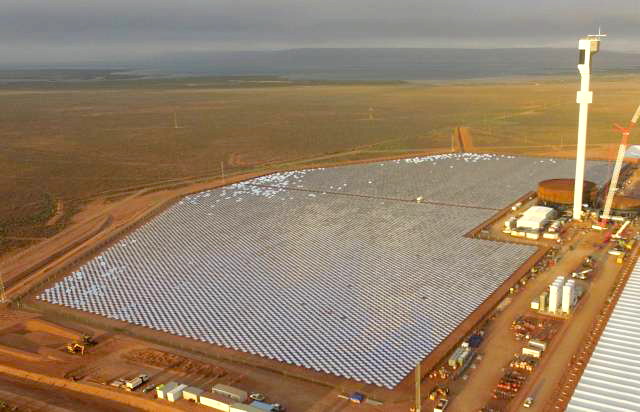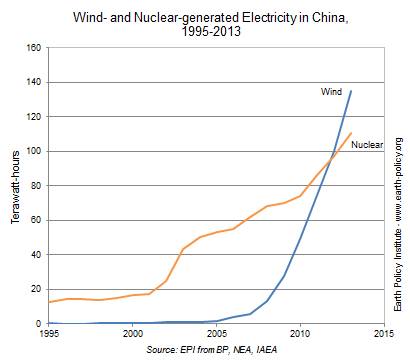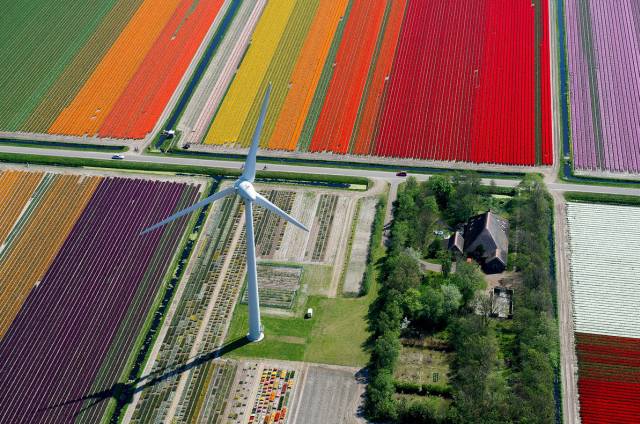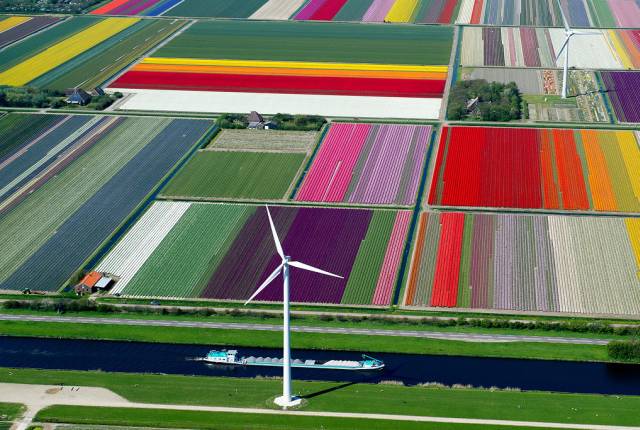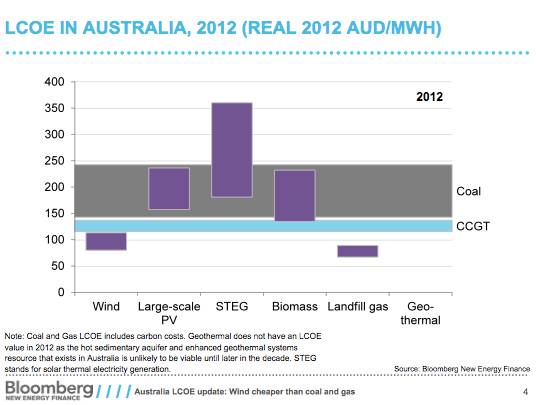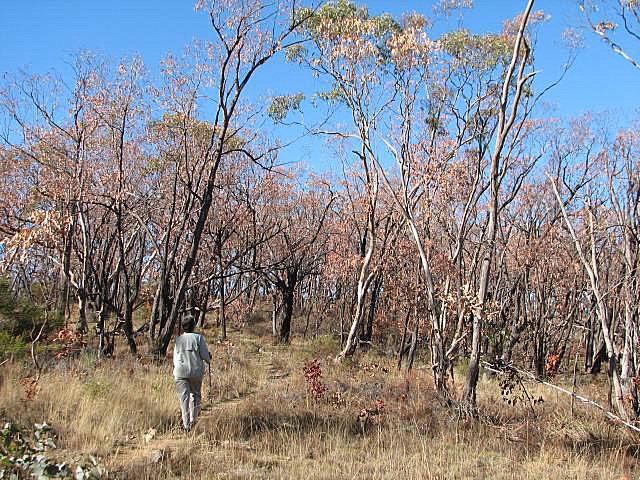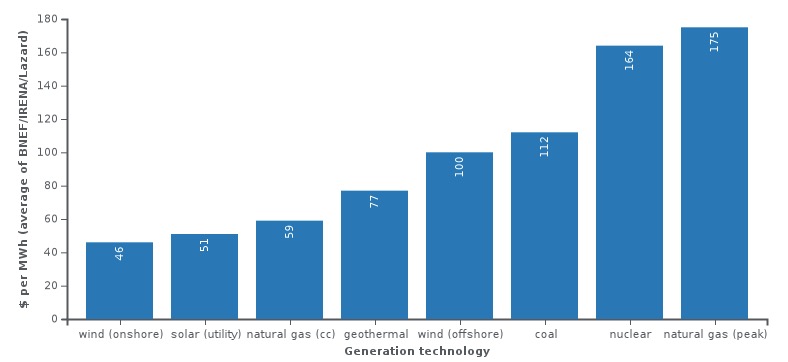|
|
| Emissions intensity on the Australian NEM
|
|---|
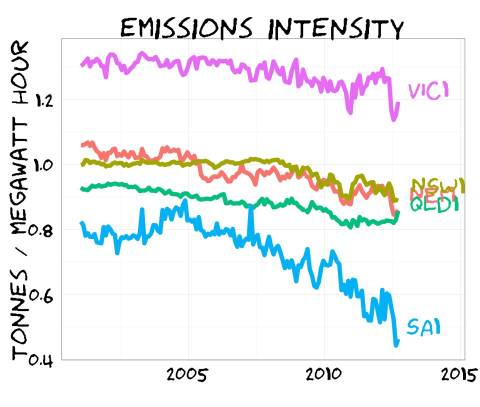
| Emissions intensity (EI) from the four large states in the Australian
National Electricity Market (NEM) and the average for the whole of the NEM,
including Tasmania.
(Tasmania's EI is off-scale at the bottom of this graph.)
Graph credit – Professor Mike Sandiford, University of Melbourne;
data from the Australian Energy Market Operator (AEMO)
| |
Note the very large decline in South Australia's EI; due almost entirely to
the introduction of wind power.
| |
Senator Edwards' Net site has an (undated)
press release headlined
"Wind Farms Should Not Receive Subsidies From Taxpayers".
While it is true that renewable energy generaters receive a bonus for every
megawatt-hour of power that they generate they do not
receive subsidies from taxpayers.
Significantly Senator Edwards does not complain of the billions of dollars in
subsidies and compensation going to
the coal-fired power station operators and the fossil fuel industry.
Senator Edwards stated "We are paying more for our power because of the
influence of the renewable energy proponents over the Federal/State Labor
governments and the Greens."
In fact there is good
evidence that renewable
energy is reducing the wholesale price of electricity.
On 11th July 2013 Sid Maher had an article in The Australian titled
"Electricity market shrinks by 40pc as prices tumble".
Mr Maher discussed the increased supply of renewable energy to the market.
He quoted the Chief Executive of the Energy Supply Association
of Australia (ESAA), Matthew Warren, as
saying "One of the major effects of
this increased supply of renewable energy in a shrinking national market
is to suppress the wholesale price of electricity."
Note, the generation of power from renewables, including wind, is
suppressing wholesale power prices.
Senator Edwards will not say whether he accepts
climate science.
He shows no indication of caring about the
ocean acidification
that the burning of fossil fuels is causing, nor the
many deaths and serious diseases caused by the
air pollution from burning coal to generate power.
On 2013/06/29 the Clean Energy Regulator gave the volume weighted average
market price for large-scale generation certificates (LGC) as $38.69/MWh.
What this means is that, on top of whatever price the wind farmers can
get for the electricity they generate on the open market, they get another
$38.69 per megawatt-hour because the power is renewable.
$38.69/MWh equals $0.03869/kWh – about 4¢/kWh.
This is factored into the retail price of electricity.
So if a quarter of the electricity is renewable, as in South Australia,
about 1¢ is added to the approximately 25¢ that one pays for a
kilowatt-hour of electricity; a 4% increase due to wind farms.
(But one must remember that renewables are suppressing the wholesale price of
electricity, so it is questionable if the retail price is increased by
renewables at all.)
|
|
Evidence
Supporting arguments and evidence for most of my statements on this page
can be found by following the links provided on this page.
Most of the links connect to other pages of mine.
Should you want to go direct to original and independent sources go to my
page Wind Links, or use this link for matters
concerning
health and wind turbines, or this
for matters concerning
wind tubines and noise.
|
| |
| |
Subsidies
Senator Edwards conveniently neglects to mention the huge subsidies received
by the fossil fuel industry.
International Monetory Fund (IMF) report July 2015
An IMF report on global subsidies to fossil fuels showed that in 2015 in
Australia they amounted to US$15.65b for petroleum and US$10.45b for coal;
this equals a total of about US$1100 per Australian per year.
IMF report May 2015
The IMF
increased its previous estimate of the subsidies going to (mainly) fossil
fuels.
They put the figure at $5.3 trillion per year (or about $10 million per
minute).
This is more than the total spending on health of all the world's governments
and largely relates to polluters not paying the costs – social welfare,
health, environmental and broader economic – imposed on governments for
the burning of coal, oil and gas.
|
| |
| |
Fossils
South Australia is where the Ediacaran blooming of life that occurred 575
million years ago was discovered.
If one was to judge by Senator Edwards, who doesn't want to see renewables
replace fossil fuels, one might think that SA hasn't come very far since then.
In a January 2017
poll, conducted by ReachTEL for GetUp, only 18% of respondents swallowed
the line that recent electricity price rises were due to renewable energy.
58% put it down to privatization and lack of competition.
Even most Liberal voters didn't swallow the message the Liberals and Murdoch
media have been putting out!
Which group was most likely to believe the bullshit? Old men who vote
Liberal, like Senator Edwards!
|
| |
What motivates Senator Edwards?
I can only speculate, I don't even know if Senator Edwards accepts climate
science, he won't tell me.
I suspect that he has two motivations:
- In common with many of the big-party politicians, I suspect he owes a
lot to the fossil fuel and mining industries for the campaign funding that
they supply.
- It seems that Senator Edwards feels that if he can discredit the
Australian wind farm industry, that largely owes its existence to the
20% by 2020 renewable energy target put in place by a Labor government,
he discredits the Labor party and improves his standing among his fellow
Liberals at the same time.
|
| |
Ethics
Senator Edwards, try putting the planet and South Australia first and the
short-term interests of the Liberal Party second for a change.
|
|
There are a number of independent organisations that have stated that
rises in electricity prices have very little to do with renewable energy,
for example:
- A report from the Australian Energy Market
Commission gave 3% as the "contribution to national price
increases" from the Renewable Energy Target and that wholesale
electricity prices have been falling during the period when most of
Australia's wind farms were coming on-line (see
here);
- The Australian Energy Market Operator, in their submission to the
South Australian Parliamentary Committee on Wind Farm Developments in SA
stated "Due to its economics in comparison to other forms of generation, wind
power has emerged as the dominant new technology in meeting [the renewable
energy] target".
Almost every nation that has wind farms is planning to build more.
In his Should not Receive Subsidies press release Senator Edwards says:
"We should not forget that the turbines have to be switched off when the
weather is either too hot or the breezes too great."
Yes Sean, they lose perhaps 0.5% of potential because of high temperatures
and extreme winds.
Temperatures rarely go above the necessary 40° or so at 80 to 100m above
ground level needed to shut the turbines down, and winds of
more than 25m/sec are very rare.
"This form of renewable energy is a long way from being able to be a
base-load supplier of power when it is needed most at peak demand."
Senator Edwards seems not to know that base-load and peak demand
are two very different things.
No power generation technology is well suited for both.
"... when the power is most required, you can't depend on wind farms to
supply it."
Senator Edwards is stating the obvious here; of course wind power is only
available when the wind is blowing.
Gas fired generators have no trouble in filling in the gaps.
The important thing about wind power is that when the wind is blowing it
can, and does, displace fossil-fuel electricity.
In an effort to shore-up their stance wind farm detractors search and
search for statements about governments that have changed their minds and
are not going to build more wind farms; they don't find many.
Senator Edwards found a statement from Britain's Climate Change Minister
declaring that "there would be no significant expansion of wind farms
beyond those already in the pipeline".
What Senator Edwards did not say is that later the UK Prime Minister said
that "There has been no change in the government's policy on renewable
energy".
Liberal Democrats boss Ed Davey said "The government is still committed to
renewables including onshore wind".
(See BBC)
The Senator might be interested to know that England's 4th largest onshore
wind farm was
approved in early February 2013,
after he wrote the statement above.
In July 2013 Prime Minister Cameron launched the world's largest offshore
wind farm, 175 turbines with a total installed capacity of 630MW.
Selecting evidence that suits your point of view, and ignoring conflicting
evidence is called cherry picking.
It is a sign of a dishonest investigator.
The Senator does not mention what we should do to combat
climate change
and ocean acidification
if we were to drop wind power, nor does he
mention that wind power in Australia has been very effective in reducing
carbon dioxide emissions intensity (see the graph on the right above).
Senator Edwards finishes his press release by apparently regretting the fact
that one of South Australia's coal-fired power stations was, in future, only
to operate for six months of the year and the other to be closed-down
indefinitely (largely due to the introduction of a significant amount of
wind power).
|
